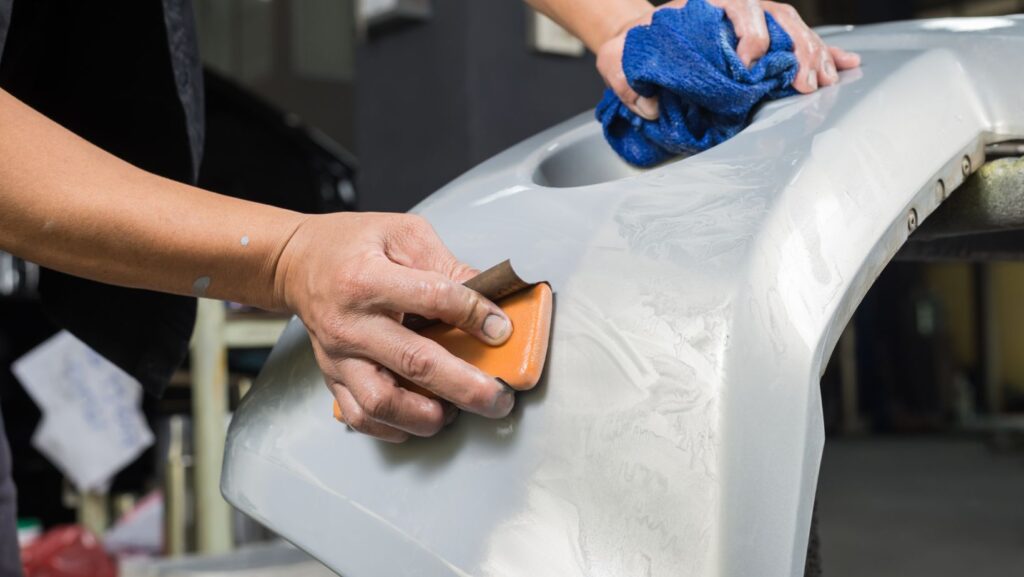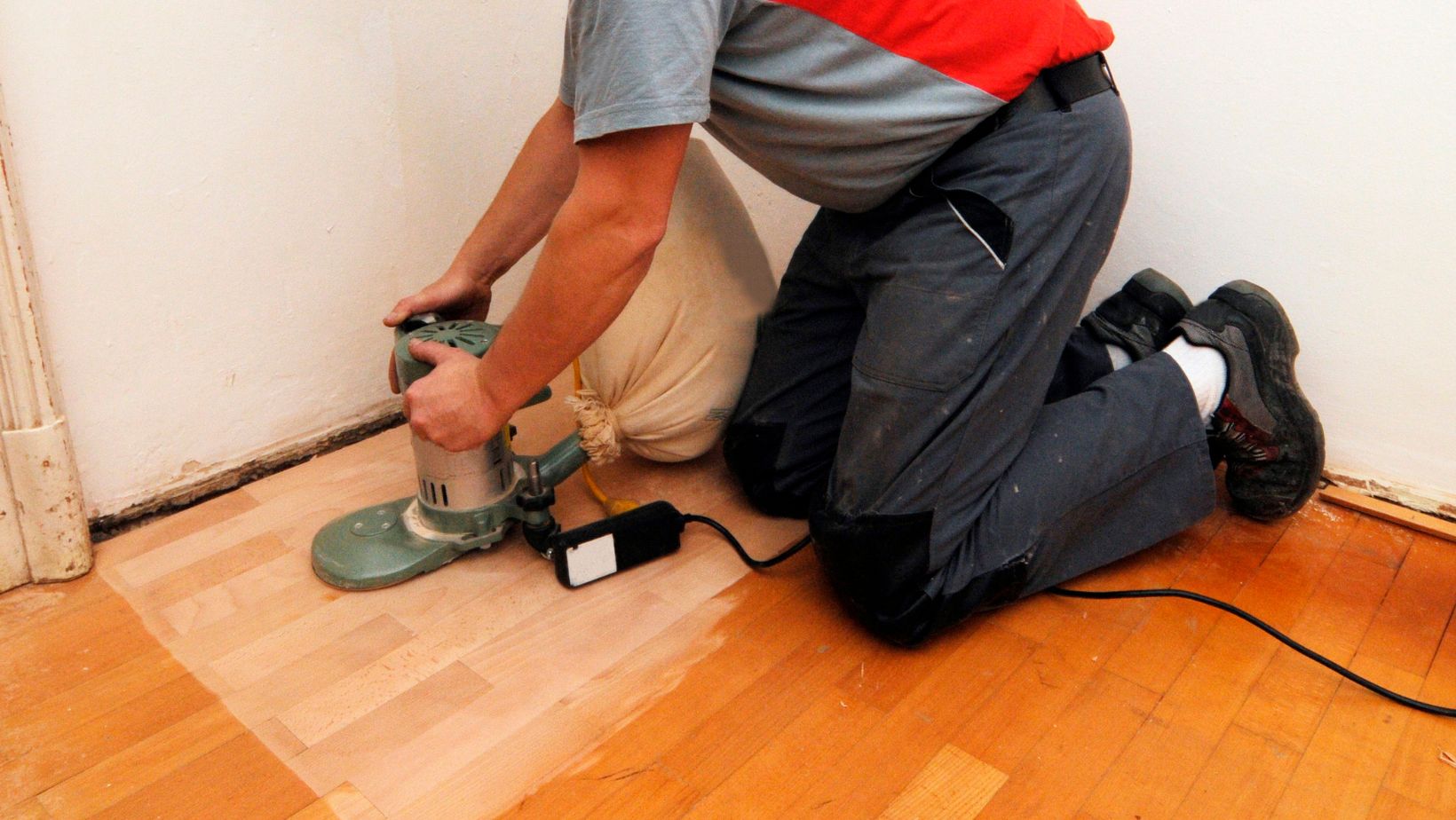Does Sanding Remove Pet Stains and Scratches?

If you have pets, you likely know the challenges in maintaining pristine wood floors. Pet stains and scratches are common issues that can detract from the beauty and value of your flooring. You might be wondering whether wood floor sanding is the right solution to these problems. Wood floor sanding involves removing the top layer of the floor to reveal a fresh surface underneath. It’s a popular method for addressing various flooring issues, but is it the best approach for dealing with pet stains and scratches?
Common Pet Stains and Scratches on Wood Floors
Pet stains and scratches on wood floors can vary widely in severity and appearance. Urine stains are among the most common, often resulting in unsightly discoloration and lingering odors. As these stains seep into the wood, they can become more challenging to remove over time, especially if not addressed promptly. Other types of stains can arise from pet food and water bowls, leading to rings or patches of discoloration.
Scratches are another frequent issue, typically caused by pets’ claws or the dragging of toys and furniture. While some scratches are superficial, others may penetrate deeper into the wood, leading to more significant damage. Deep scratches not only affect the aesthetic of your floors but can also increase the risk of splinters and further wear over time. In many cases, professional hardwood floor sanding and refinishing is the most effective way to eliminate these imperfections and restore a smooth, uniform surface.
Understanding the specific nature of stains and scratches on your floors is crucial for determining the best remedy. Identifying whether the damage is primarily on the surface or if it penetrates deeper will guide your choice between sanding and other repair methods. By assessing the extent and type of damage, you can tailor your approach to effectively restore your floors.
How Sanding Works: The Process Explained
Wood floor sanding is a multi-step process designed to rejuvenate your flooring by removing surface imperfections. The procedure typically begins with an initial assessment of the floor’s condition, followed by the selection of appropriate sanding equipment and abrasives. The goal is to remove the damaged top layer, revealing a fresh, smooth surface beneath.
The sanding process involves several passes with sandpaper of varying grits, starting with a coarse grit to strip away old finishes and level out deep scratches. Subsequent passes use finer grits to smooth the surface and prepare it for refinishing. This meticulous approach ensures that all imperfections, including stains and scratches, are addressed as thoroughly as possible.
After sanding, the floor is cleaned to remove dust and debris, and a new finish is applied. This final step not only enhances the appearance of the wood but also provides a protective layer to guard against future damage. The result is a floor that looks revitalized and is better equipped to withstand the wear and tear of daily life with pets.
Benefits of Sanding for Pet Damage
Sanding offers several advantages when dealing with pet-related damage on wood floors. First and foremost, it effectively removes surface-level stains and scratches, restoring the floor’s original appearance. By eliminating the damaged top layer, sanding can significantly improve the aesthetic of your floors, making them look almost new again.
Another benefit of sanding is its ability to prepare the floor for refinishing. Once the sanding process is complete, applying a new finish can protect the wood from future damage, making it more resistant to stains and scratches. This added layer of protection can extend the lifespan of your flooring, reducing the need for frequent repairs or replacements.
Moreover, sanding can increase the overall value of your home. Well-maintained wood floors are a desirable feature for potential buyers, and a freshly sanded and finished floor can enhance the appeal of your home. By investing in sanding, you’re not only improving the current state of your floors but also potentially boosting your property’s marketability.
Limitations of Wood Floor Sanding
Despite its benefits, wood floor sanding has limitations that should be considered. One significant drawback is that sanding can only address surface-level damage. Deep stains and scratches that penetrate several layers of wood may not be entirely removed by sanding alone, necessitating additional repair methods.
Sanding also reduces the thickness of your wood floors. Over time, repeated sanding can wear down the boards, potentially leading to structural issues. This concern is particularly relevant for engineered wood floors, which have a thinner top layer compared to solid wood. It’s crucial to weigh the long-term implications of sanding against its immediate benefits.
Additionally, the process can be labor-intensive and time-consuming, especially for those choosing to DIY. The need for specialized equipment and the potential for uneven sanding results can make it a challenging task for novices. These factors highlight the importance of carefully assessing whether sanding is the most suitable solution for your specific pet-related issues.
Alternative Solutions for Pet Stains and Scratches
If sanding seems too invasive or impractical, there are alternative methods to address pet stains and scratches on wood floors. One option is using specialized wood cleaners and stain removers, which can effectively lift some surface stains without the need for sanding. These products are particularly useful for recent stains that haven’t penetrated deeply into the wood.
For scratches, wood filler or wax crayons designed for floor repair can be a quick fix. These solutions can help mask superficial scratches, improving the floor’s appearance with minimal effort. Application is straightforward, making them an accessible option for those looking to perform minor repairs without professional assistance.
In cases where damage is extensive, replacing individual planks or sections of flooring might be necessary. Although more costly than other methods, replacement ensures that all damaged areas are completely removed. This approach can be particularly beneficial for addressing deep scratches or stains that have penetrated through multiple layers of wood.
DIY vs. Professional Sanding Services
When deciding whether to tackle sanding as a DIY project or hire professionals, several factors come into play. DIY sanding can be cost-effective, as it eliminates labor costs and allows for direct control over the project. However, the process requires significant time investment and access to specialized equipment.
Professional sanding services offer expertise and efficiency, often resulting in a higher-quality finish. Experienced professionals can accurately assess the condition of your floors, select the appropriate sanding techniques, and execute the process with precision. This option is particularly advantageous for those with limited DIY experience or large areas of flooring to restore.
Ultimately, the choice between DIY and professional services depends on your budget, skills, and the extent of the damage. Consider the pros and cons of each approach, and choose the one that aligns best with your needs and capabilities. Whether you opt for DIY or professional services, ensuring the job is done correctly will maximize the longevity and appearance of your wood floors.
Cost Considerations for Wood Floor Sanding
The cost of wood floor sanding can vary significantly based on several factors, including the size of the area, the extent of the damage, and whether you choose to hire professionals or tackle the job yourself. On average, professional sanding services can range from $1.50 to $5.00 per square foot, depending on the complexity of the project and the region.
DIY sanding can reduce costs considerably, as you’ll only need to rent or purchase equipment and materials. However, it’s essential to account for potential additional expenses, such as protective gear, sandpaper, and finishes. These costs can add up, particularly if you’re unfamiliar with the process and make mistakes that require correction.
When budgeting for sanding, consider the potential long-term savings from restoring your floors. Well-maintained wood floors can enhance the value of your home and reduce the need for costly repairs or replacements down the line. By balancing immediate costs with future benefits, you can make an informed financial decision.
Summary
Deciding whether wood floor sanding is the appropriate solution for your pet-related issues involves weighing various factors, including the nature and extent of the damage, your budget, and your personal preferences. Sanding offers a reliable method for addressing surface-level stains and scratches, providing a fresh start for your floors and enhancing their durability with a new finish.


 Seamless HVAC Protection: Year-Round AC Care and Around-the-Clock Furnace Support
Seamless HVAC Protection: Year-Round AC Care and Around-the-Clock Furnace Support  Why DIY Moves Cost More Than You Think (And How Movers Solve It)
Why DIY Moves Cost More Than You Think (And How Movers Solve It)  5 Ideal Quality Air Duct Cleaning Solutions for Homes and Offices
5 Ideal Quality Air Duct Cleaning Solutions for Homes and Offices